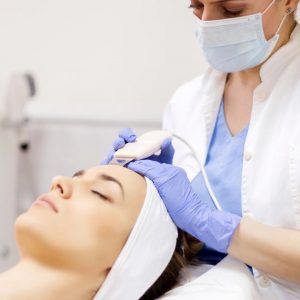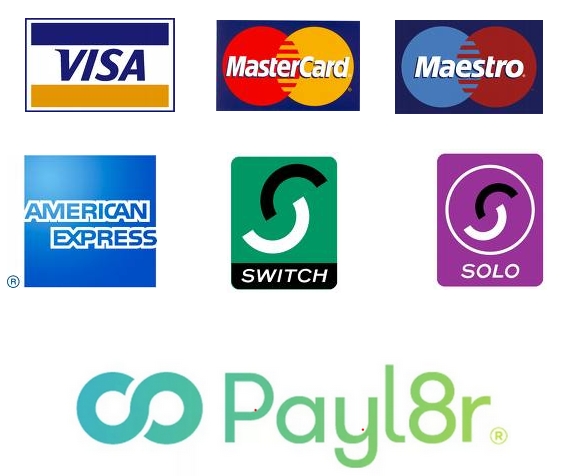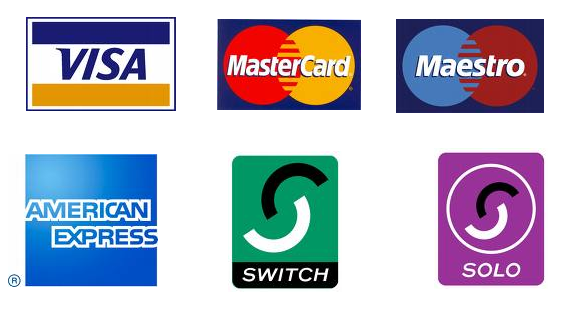Address
Wimbledon, London View mapCategories
Microneedling
Course Objective
To provide participants with a comprehensive understanding of the microneedling with RF technology, its applications, and hands-on techniques for achieving effective skin rejuvenation and treatment of various skin conditions.
Target Audience
Aesthetic professionals, including beauty therapists, nurses, dermatologists, and other skin care professionals who wish to incorporate microneedling with RF into their practice.
Modules
Module 1: Introduction to Microneedling and RF Technology
Duration: 1 hour
- What is Microneedling?
- Overview of traditional microneedling techniques (dermarollers vs. dermapens or dermaforce)
- Benefits of microneedling (skin rejuvenation, scar reduction, hyperpigmentation treatment)
- Mechanism of action: Inducing controlled micro-injuries to promote collagen production
- What is Radio Frequency (RF)?
- Introduction to RF energy and its function in aesthetics
- Types of RF (monopolar vs. bipolar, fractional RF)
- How RF complements microneedling to enhance results
- The role of heat in stimulating collagen and tightening the skin
- Microneedling with RF (RF Microneedling) Overview
- How RF energy is delivered via microneedles into the dermis
- Advantages of combining microneedling with RF over traditional microneedling
- Results you can expect: Skin tightening, wrinkle reduction, scar improvement
Module 2: Anatomy and Physiology of the Skin
Duration: 2 hours
- Skin Layers and Their Functions
- Epidermis, dermis, and hypodermis: Structure and function
- The importance of the dermis in microneedling treatments (collagen, elastin, fibroblasts)
- Role of skin barrier and healing process post-treatment
- Skin Aging Process and Treatment Goals
- How aging affects skin texture, elasticity, and collagen production
- Indications for microneedling with RF: Wrinkles, sagging skin, acne scars, enlarged pores, etc.
- How RF microneedling helps rejuvenate and revitalize aged skin
Module 3: Microneedling with RF: Treatment Process
Duration: 3 hours
- Pre-Treatment Consultation and Skin Assessment
- Client medical history: Contraindications (e.g., active acne, eczema, open wounds, or rosacea)
- Skin analysis: Determining skin type and condition
- Setting realistic expectations: Benefits, downtime, and potential side effects
- Preparing the Skin for Treatment
- Cleansing the skin and sterilizing the treatment area
- Topical numbing creams: How and why they are used
- Marking the treatment zones
- Microneedling with RF Procedure
- Step-by-step guide on how RF microneedling is performed
- Adjusting needle depth (depending on treatment area)
- Settings for RF intensity (depending on skin type and treatment goals)
- Creating a grid pattern for even distribution
- Understanding different types of RF microneedling devices and their features
- How to operate and adjust the machine for optimal results
- Step-by-step guide on how RF microneedling is performed
- Post-Treatment Care
- Immediate aftercare instructions (avoiding heat, sun exposure, etc.)
- Recommended skincare products (hydrating serums, post-procedure creams)
- Anticipated side effects: redness, mild swelling, and sensitivity
- Pain management post-procedure
Module 4: RF Microneedling for Specific Skin Conditions
Duration: 2 hours
- Treating Wrinkles and Fine Lines
- Best treatment areas: Forehead, crow’s feet, neck, and décolletage
- Optimal needle depths and RF settings for anti-aging
- Acne Scars and Textural Irregularities
- How RF microneedling improves the appearance of atrophic scars
- Tips for targeting different scar types (boxcar, ice pick, rolling scars)
- Post-treatment care to prevent scarring or pigmentation issues
- Skin Tightening and Lifting
- Indications for lifting sagging skin and tightening loose tissues
- Treating areas like the jowls, neck, and under-eyes
- How RF energy promotes collagen production and tightens the skin
- Hyperpigmentation and Skin Tone Unevenness
- Use of microneedling with RF for evening out pigmentation (e.g., sunspots, melasma)
- Adjusting the treatment plan for hyperpigmented skin
Module 5: RF Microneedling Devices and Technology
Duration: 1.5 hours
- Understanding Different RF Microneedling Devices
- Overview of popular RF microneedling machines and their capabilities
- Comparison of features: Needle depth control, RF energy settings, treatment precision
- Device Maintenance and Safety Protocols
- Cleaning and sterilization of needles and handpieces
- Calibration and testing of devices to ensure performance
- How to troubleshoot common issues with RF microneedling devices
- Choosing the Right Device for Your Practice
- Factors to consider: Budget, machine durability, ease of use
- Ensuring compliance with local regulations and certifications
Module 6: Safety, Side Effects, and Risk Management
Duration: 1 hour
- Possible Side Effects and Complications
- Common side effects: Redness, swelling, bruising, and mild discomfort
- Rare side effects: Infection, scarring, pigmentation changes
- How to recognize and address complications early
- Managing Risks and Ensuring Safe Practice
- Protocols for minimizing risks: Sterilization, correct machine settings, skin testing
- Managing client expectations and providing pre- and post-treatment education
- When to refer clients to a medical professional (e.g., for severe reactions)
Module 7: Practical Demonstration and Hands-On Training
Duration: 3 hours
- Live Demonstration of RF Microneedling Treatment
- Step-by-step treatment on a live model
- Participants observe key steps such as preparing the skin, setting up the device, and applying RF microneedling
- Hands-On Practice
- Participants perform RF microneedling on practice skins or under supervision on real models (if permitted by law)
- Feedback and guidance from instructors
- Troubleshooting and Problem-Solving in Real-Time
- Common challenges during treatment and how to handle them
- Participant Q&A and discussion of difficult cases
Module 8: Post-Treatment Follow-Up and Client Care
Duration: 1 hour
- Client Follow-Up Procedures
- Scheduling follow-up appointments and determining treatment cycles
- How to monitor and evaluate results
- When to adjust the treatment plan based on progress
- Long-Term Results and Maintenance
- Setting realistic timelines for results to fully manifest
- Lifestyle tips for prolonging results (e.g., skincare, sun protection)
Course Assessment and Certification
Duration: 1 hour
- Written Exam
- Multiple-choice or short-answer questions to test theoretical knowledge on RF microneedling
- Practical Evaluation
- Demonstration of microneedling with RF on a live model or mannequin
- Assessment of technique, patient care, and safety procedures
- Certification of Completion
- Awarding certificates to those who pass both the written and practical components
Post-Course Support and Continuing Education
- Ongoing Support: Access to a forum or direct contact with instructors for follow-up questions.
Continuing Education: Opportunities for advanced courses, webinars, and updates on the latest industry trends.

Course Information:
Modules
Module 1: Introduction to Microneedling and RF Technology
Duration: 1 hour
- What is Microneedling?
- Overview of traditional microneedling techniques (dermarollers vs. dermapens or dermaforce)
- Benefits of microneedling (skin rejuvenation, scar reduction, hyperpigmentation treatment)
- Mechanism of action: Inducing controlled micro-injuries to promote collagen production
- What is Radio Frequency (RF)?
- Introduction to RF energy and its function in aesthetics
- Types of RF (monopolar vs. bipolar, fractional RF)
- How RF complements microneedling to enhance results
- The role of heat in stimulating collagen and tightening the skin
- Microneedling with RF (RF Microneedling) Overview
- How RF energy is delivered via microneedles into the dermis
- Advantages of combining microneedling with RF over traditional microneedling
- Results you can expect: Skin tightening, wrinkle reduction, scar improvement
Module 2: Anatomy and Physiology of the Skin
Duration: 2 hours
- Skin Layers and Their Functions
- Epidermis, dermis, and hypodermis: Structure and function
- The importance of the dermis in microneedling treatments (collagen, elastin, fibroblasts)
- Role of skin barrier and healing process post-treatment
- Skin Aging Process and Treatment Goals
- How aging affects skin texture, elasticity, and collagen production
- Indications for microneedling with RF: Wrinkles, sagging skin, acne scars, enlarged pores, etc.
- How RF microneedling helps rejuvenate and revitalize aged skin
Module 3: Microneedling with RF: Treatment Process
Duration: 3 hours
- Pre-Treatment Consultation and Skin Assessment
- Client medical history: Contraindications (e.g., active acne, eczema, open wounds, or rosacea)
- Skin analysis: Determining skin type and condition
- Setting realistic expectations: Benefits, downtime, and potential side effects
- Preparing the Skin for Treatment
- Cleansing the skin and sterilizing the treatment area
- Topical numbing creams: How and why they are used
- Marking the treatment zones
- Microneedling with RF Procedure
- Step-by-step guide on how RF microneedling is performed
- Adjusting needle depth (depending on treatment area)
- Settings for RF intensity (depending on skin type and treatment goals)
- Creating a grid pattern for even distribution
- Understanding different types of RF microneedling devices and their features
- How to operate and adjust the machine for optimal results
- Step-by-step guide on how RF microneedling is performed
- Post-Treatment Care
- Immediate aftercare instructions (avoiding heat, sun exposure, etc.)
- Recommended skincare products (hydrating serums, post-procedure creams)
- Anticipated side effects: redness, mild swelling, and sensitivity
- Pain management post-procedure
Module 4: RF Microneedling for Specific Skin Conditions
Duration: 2 hours
- Treating Wrinkles and Fine Lines
- Best treatment areas: Forehead, crow’s feet, neck, and décolletage
- Optimal needle depths and RF settings for anti-aging
- Acne Scars and Textural Irregularities
- How RF microneedling improves the appearance of atrophic scars
- Tips for targeting different scar types (boxcar, ice pick, rolling scars)
- Post-treatment care to prevent scarring or pigmentation issues
- Skin Tightening and Lifting
- Indications for lifting sagging skin and tightening loose tissues
- Treating areas like the jowls, neck, and under-eyes
- How RF energy promotes collagen production and tightens the skin
- Hyperpigmentation and Skin Tone Unevenness
- Use of microneedling with RF for evening out pigmentation (e.g., sunspots, melasma)
- Adjusting the treatment plan for hyperpigmented skin
Module 5: RF Microneedling Devices and Technology
Duration: 1.5 hours
- Understanding Different RF Microneedling Devices
- Overview of popular RF microneedling machines and their capabilities
- Comparison of features: Needle depth control, RF energy settings, treatment precision
- Device Maintenance and Safety Protocols
- Cleaning and sterilization of needles and handpieces
- Calibration and testing of devices to ensure performance
- How to troubleshoot common issues with RF microneedling devices
- Choosing the Right Device for Your Practice
- Factors to consider: Budget, machine durability, ease of use
- Ensuring compliance with local regulations and certifications
Module 6: Safety, Side Effects, and Risk Management
Duration: 1 hour
- Possible Side Effects and Complications
- Common side effects: Redness, swelling, bruising, and mild discomfort
- Rare side effects: Infection, scarring, pigmentation changes
- How to recognize and address complications early
- Managing Risks and Ensuring Safe Practice
- Protocols for minimizing risks: Sterilization, correct machine settings, skin testing
- Managing client expectations and providing pre- and post-treatment education
- When to refer clients to a medical professional (e.g., for severe reactions)
Module 7: Practical Demonstration and Hands-On Training
Duration: 3 hours
- Live Demonstration of RF Microneedling Treatment
- Step-by-step treatment on a live model
- Participants observe key steps such as preparing the skin, setting up the device, and applying RF microneedling
- Hands-On Practice
- Participants perform RF microneedling on practice skins or under supervision on real models (if permitted by law)
- Feedback and guidance from instructors
- Troubleshooting and Problem-Solving in Real-Time
- Common challenges during treatment and how to handle them
- Participant Q&A and discussion of difficult cases
Module 8: Post-Treatment Follow-Up and Client Care
Duration: 1 hour
- Client Follow-Up Procedures
- Scheduling follow-up appointments and determining treatment cycles
- How to monitor and evaluate results
- When to adjust the treatment plan based on progress
- Long-Term Results and Maintenance
- Setting realistic timelines for results to fully manifest
- Lifestyle tips for prolonging results (e.g., skincare, sun protection)
Course Assessment and Certification
Duration: 1 hour
- Written Exam
- Multiple-choice or short-answer questions to test theoretical knowledge on RF microneedling
- Practical Evaluation
- Demonstration of microneedling with RF on a live model or mannequin
- Assessment of technique, patient care, and safety procedures
- Certification of Completion
- Awarding certificates to those who pass both the written and practical components
Post-Course Support and Continuing Education
- Ongoing Support: Access to a forum or direct contact with instructors for follow-up questions.

